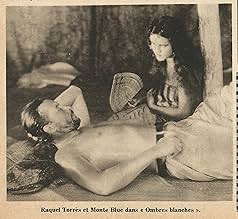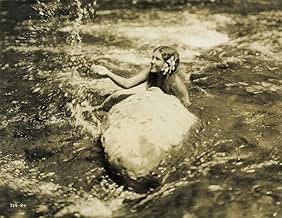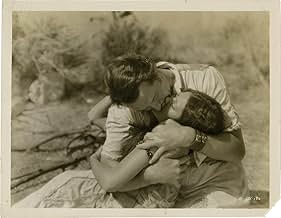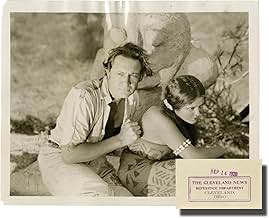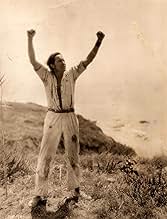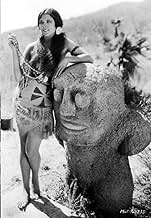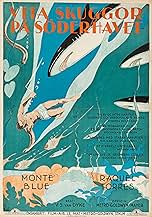IMDb RATING
6.8/10
1.1K
YOUR RATING
An alcoholic doctor on a Polynesian island, disgusted by white exploitation of the natives, finds himself marooned on a pristinely beautiful island.An alcoholic doctor on a Polynesian island, disgusted by white exploitation of the natives, finds himself marooned on a pristinely beautiful island.An alcoholic doctor on a Polynesian island, disgusted by white exploitation of the natives, finds himself marooned on a pristinely beautiful island.
- Won 1 Oscar
- 1 win total
Robert Anderson
- Sebastian - a Trader
- (uncredited)
Renee Bush
- Lucy
- (uncredited)
Dorothy Janis
- Native Girl
- (uncredited)
Napua
- Native Boy
- (uncredited)
Featured reviews
The very first "sound track" film from MGM..sound effects track added by Doug Shearer, who did the sound recording on about 90% of all the old black & whites. Caption cards are still used throughout the film for the dialogue. Was also actually filmed in Tahiti, which would have been pretty rare for those times. Monte Blue ( plays Doctor Lloyd ) and Robert Anderson (the trader) had been in silent films for years, but this was Raquel Torres' ("Fayaway") first role. In our story, when pearls are discovered in the waters of the south seas, the white men move in to take advantage. The natives are up against the caucasian traders, the critters of the sea, storms, and sickness when it comes to their shores. The story is quite simple, but the outdoor and underwater photography are the high points here. Even with a respectable restoration, different scenes appear in various colors, and the lighting and sound have become slightly spotty. Interesting scenes at the feast, where prior to cooking, the fish is carefully sewn up in leaves to keep it from burning. Where others have despaired over the "documentary" feel to the film, I felt that this was one of the strengths. (Although some of those costumes and dances DO look pretty hokey.) Lloyd lives with the natives, and must decide what his long term goal is, and how to reach it. Several scenes have been sped up, which may have been an effort by "someone" to move the plot along more quickly. Or maybe just newer technology going at a different speed. Directed by WS Van Dyke, produced by Thalberg and Stromberg, all pretty big cheeses in the industry at the time.
MGM did this film no favour by promoting it as their first "sound" film. Given the obsession with "sound" that dominated the US cinema industry in 1928 this meant that all criticism of the film tended to concentrate on whether it ws or was not a genuine "sound" film - which quite evidently it was not. It has a musical score by William Axt intermingled with a few sound effects but, since such orchestral scores were already common in major cinemas during the late silent era, only the degree of synchronisation (the first work of MGM sound recordist Douglas Shearer) represented any kind of innovation.
And the value of the film is not of course there at all but lies, as with any other good silent film, in the strong script and excellent cinematography by Clyde de Vinna (who received the Oscar and would work on all Van Dyke's "exotic" films of the next few years - The Pagan, Trader Horn, The Eskimo) and Bob Roberts who has worked with Flaherty on Moana (1926) and would go on rather surprisingly to become one of the principal cinematographers in the flourishing Argentinian film industry.
Normally speaking this film ought to represent everything that I tend to find crass and mediocre in US film. It is a producer's and cutter's film par excellence, chosen by Irving Thalberg himself and directed by the notorious "one-shot Woody"; Robert Flaherty who was initially to have directed was sacked for working too slowly.
Yet I have to admit this seems to me in some ways the classic US film at its best before the influence of "sound" has become fully felt. It may not have been shot as it claims in the Marquesas but was nevertheless made on location in Tahiti and the cinematography is not in the least studio-bound nor overly preoccupied with continuity or glamorous "star"-focus. It makes use of local non-professional actors and actors and gives a dignified and not altogether paradisal picture of traditional island life. Even without the influence of Flaherty, the film is "too slow" for at least one other commentator, that is to say, probably just about right for any non-US audience. To my mind, it is not the "documentary" aspects of the film one would like to see curtailed but rather the tiresome and over-sentimental love-scenes (to please Thalberg's philistine colleague Stromberg), complete with a bit of "whistling" (to assuage the sound-buffs), which are quite the weakest feature of the film.
Then, politically, as other reviewers have already remarked, it is a strong and unambiguous condemnation of colonial exploitation. In this respect there were two different trends in the US take on traditional cultures - the "progressist" notion on the one hand that they were picturesque but desperately and cruelly harsh (the view favored by Flaherty in Nanook or in The Man of Arran) and the "nostalgic" view of such cultures as "paradisial" (curiously also associated, almost by accident, with Flaherty who had been unable to find anything sufficiently gruesome on Samoa and had to be satisfied with reviving a defunct practice of painful body-tattooing for his 1926 film Moana). As a result Moana had been sold as an "idyll" and contributed to the development of a US "tiki" culture dominated by ideas of the "lost paradise" and "the noble savage".
Probably this film, like Murnau's later Taboo, gained from the departure of Flaherty whose politics were always inclined to favour rather than condemn the "civilising mission". Thalberg and Van Dyke have strongly taken the opposite view while not exaggerating the notion of "paradise" either. In other words, they have successfully steered a course between two false myths (that of primitives saved by civilisation from the harsh savagery, on the one hand and that of a paradisal idyll on the other). Here, whether originally paradisal or not, we are shown a world that is victim to a genuinely savage exploitation by the dreg-end of colonialism (as in the stories of Joseph Conrad) but the contrast shown (very clearly in the parallel scenes of diving and in the more heavily allegorical opposition between pearls and fish-hooks), is not, despite a bit of false rhetoric, so much between a paradise and a hell but rather, quite simply and correctly, between a good and bad use of natural resources and between decent and indecent value-systems.
In the later scenes the story turns totally to moral parable (the corrupting "white shadow" that develops in the hero himself), but, shorn of the more "mystical" elements of the original book, it remains on the whole a reasonably realistic representation, excellently played and excellently shot. The ending, which I shall not reveal although it is I some ways the most unusual feature of the film, is powerful where it could so easily have been facile. The film holds up well , as another reviewer remarks, beside Murnau's 1931 Tabu and compares very favourably indeed with King Vidor's 1932 The Bird of Paradise (a muddle of all conceivable myths and.a falsely glamorous star-vehicle).
The same cannot be said for the marketing of the film which was a model of tasteless exploitation with Sid Grauman's "prologue" to the film at the Chinese Theater, "The Tropics", involving an extravagant array of "tiki" singing and dancing. All the same, that "white shadow"' past ad the film shown, the stars were also present to talk afterwards about their experience in making it.
And the value of the film is not of course there at all but lies, as with any other good silent film, in the strong script and excellent cinematography by Clyde de Vinna (who received the Oscar and would work on all Van Dyke's "exotic" films of the next few years - The Pagan, Trader Horn, The Eskimo) and Bob Roberts who has worked with Flaherty on Moana (1926) and would go on rather surprisingly to become one of the principal cinematographers in the flourishing Argentinian film industry.
Normally speaking this film ought to represent everything that I tend to find crass and mediocre in US film. It is a producer's and cutter's film par excellence, chosen by Irving Thalberg himself and directed by the notorious "one-shot Woody"; Robert Flaherty who was initially to have directed was sacked for working too slowly.
Yet I have to admit this seems to me in some ways the classic US film at its best before the influence of "sound" has become fully felt. It may not have been shot as it claims in the Marquesas but was nevertheless made on location in Tahiti and the cinematography is not in the least studio-bound nor overly preoccupied with continuity or glamorous "star"-focus. It makes use of local non-professional actors and actors and gives a dignified and not altogether paradisal picture of traditional island life. Even without the influence of Flaherty, the film is "too slow" for at least one other commentator, that is to say, probably just about right for any non-US audience. To my mind, it is not the "documentary" aspects of the film one would like to see curtailed but rather the tiresome and over-sentimental love-scenes (to please Thalberg's philistine colleague Stromberg), complete with a bit of "whistling" (to assuage the sound-buffs), which are quite the weakest feature of the film.
Then, politically, as other reviewers have already remarked, it is a strong and unambiguous condemnation of colonial exploitation. In this respect there were two different trends in the US take on traditional cultures - the "progressist" notion on the one hand that they were picturesque but desperately and cruelly harsh (the view favored by Flaherty in Nanook or in The Man of Arran) and the "nostalgic" view of such cultures as "paradisial" (curiously also associated, almost by accident, with Flaherty who had been unable to find anything sufficiently gruesome on Samoa and had to be satisfied with reviving a defunct practice of painful body-tattooing for his 1926 film Moana). As a result Moana had been sold as an "idyll" and contributed to the development of a US "tiki" culture dominated by ideas of the "lost paradise" and "the noble savage".
Probably this film, like Murnau's later Taboo, gained from the departure of Flaherty whose politics were always inclined to favour rather than condemn the "civilising mission". Thalberg and Van Dyke have strongly taken the opposite view while not exaggerating the notion of "paradise" either. In other words, they have successfully steered a course between two false myths (that of primitives saved by civilisation from the harsh savagery, on the one hand and that of a paradisal idyll on the other). Here, whether originally paradisal or not, we are shown a world that is victim to a genuinely savage exploitation by the dreg-end of colonialism (as in the stories of Joseph Conrad) but the contrast shown (very clearly in the parallel scenes of diving and in the more heavily allegorical opposition between pearls and fish-hooks), is not, despite a bit of false rhetoric, so much between a paradise and a hell but rather, quite simply and correctly, between a good and bad use of natural resources and between decent and indecent value-systems.
In the later scenes the story turns totally to moral parable (the corrupting "white shadow" that develops in the hero himself), but, shorn of the more "mystical" elements of the original book, it remains on the whole a reasonably realistic representation, excellently played and excellently shot. The ending, which I shall not reveal although it is I some ways the most unusual feature of the film, is powerful where it could so easily have been facile. The film holds up well , as another reviewer remarks, beside Murnau's 1931 Tabu and compares very favourably indeed with King Vidor's 1932 The Bird of Paradise (a muddle of all conceivable myths and.a falsely glamorous star-vehicle).
The same cannot be said for the marketing of the film which was a model of tasteless exploitation with Sid Grauman's "prologue" to the film at the Chinese Theater, "The Tropics", involving an extravagant array of "tiki" singing and dancing. All the same, that "white shadow"' past ad the film shown, the stars were also present to talk afterwards about their experience in making it.
This movie, which is part silent and part talkie, is a tale of one man's disintegration, his actions which help to destroy an entire culture and his growing horror at what he has helped to bring about. The movie is still quite effective even now, more than 70 years later, largely because its concerns have probably been part and parcel with humanity's existence since we stopped being nomads and started building cities-greed, the struggle for control, the individual penchant for being your own worst enemy at times. A most memorable and compelling film, the cinematography is beautiful (it justifiably won an Oscar) and the film is one you will remember for a long while.
Spreading from island to island, the WHITE SHADOWS IN THE SOUTH SEAS corrupt every culture they encounter.
This unfortunately obscure film, produced by MGM right at the cusp when the Silent Era was giving way to Sound, is a fascinating look at the vanishing way of life to be found in the South Pacific Islands. Its beautiful, vivid photography justly won the Oscar for Best Cinematography.
This 'Camera Record' was directed by W.S. Van Dyke, the Studio's on-location master. The film's prologue states "Produced and photographed on the natural locations and with the ancient native tribes of the Marquesas Islands in the South Seas." The footage depicting the pearl divers and the coconut tree climbers is particularly noteworthy.
Monte Blue gives a very fine performance as a derelict doctor who finds himself acclaimed as a white god on an island of gentle, friendly natives. His despair at the arrival of brutish Caucasian traders in this idyllic paradise is riveting. Mexican actress Raquel Torres, in her film debut, is poignant as the island maiden who captures Blue's heart.
This unfortunately obscure film, produced by MGM right at the cusp when the Silent Era was giving way to Sound, is a fascinating look at the vanishing way of life to be found in the South Pacific Islands. Its beautiful, vivid photography justly won the Oscar for Best Cinematography.
This 'Camera Record' was directed by W.S. Van Dyke, the Studio's on-location master. The film's prologue states "Produced and photographed on the natural locations and with the ancient native tribes of the Marquesas Islands in the South Seas." The footage depicting the pearl divers and the coconut tree climbers is particularly noteworthy.
Monte Blue gives a very fine performance as a derelict doctor who finds himself acclaimed as a white god on an island of gentle, friendly natives. His despair at the arrival of brutish Caucasian traders in this idyllic paradise is riveting. Mexican actress Raquel Torres, in her film debut, is poignant as the island maiden who captures Blue's heart.
Woody Van Dyke was a prolific director, with many well-loved and classic movies helmed by him. "White Shadows in the South Seas" is one of his best, showing a mastery of camera use and a skill in leading his cast.
Monte Blue was, likewise, a very prolific actor, but his lead role here has to be one of his best, and one of his best performances. He was very affecting, very touching, and even handled the pre-Yakima Canutt fight scenes well.
There is a realism to this movie that caught my attention, even though I am very familiar with the silent genre, having been, for example, a regular for years at the old Silent Movie Theatre in Los Angeles when it was run by the great John Hampton.
As others have commented here, the beauty of the location joined with the quality of the acting and directing make this masterpiece a cinematic experience, and I urge everyone to grab any opportunity to watch it.
Monte Blue was, likewise, a very prolific actor, but his lead role here has to be one of his best, and one of his best performances. He was very affecting, very touching, and even handled the pre-Yakima Canutt fight scenes well.
There is a realism to this movie that caught my attention, even though I am very familiar with the silent genre, having been, for example, a regular for years at the old Silent Movie Theatre in Los Angeles when it was run by the great John Hampton.
As others have commented here, the beauty of the location joined with the quality of the acting and directing make this masterpiece a cinematic experience, and I urge everyone to grab any opportunity to watch it.
Did you know
- TriviaAfter completing filming on the tropical island, they returned to the MGM lot at Culver City, where W.S. Van Dyke shot some additional material, including a typhoon at sea and a shipwreck. Then the studio decided to make Ombres blanches (1928) their first sound film, so they added a synchronized soundtrack consisted of a romantic score by William Axt and David Mendoza, with a few sound effects such as wind howling, a storm, trees ruffling and the words "Hello" and "wait."
This was MGM's first sound picture, and it premiered in Hollywood at Sid Grauman's Chinese Theater on Friday, 3 Aug 1928. It is known for being the first MGM film to be released with a pre-recorded soundtrack.
- GoofsThe drowned young man's left arm moves by itself.
- Quotes
Dr. Matthew Lloyd: For God's sake, go away, Sebastian... these people are like birds... like flowers... they are like man was before he lost the Garden of Eden...
- Alternate versionsThere is an Italian edition of this film on DVD, distributed by DNA srl, "L'UOMO DI ARAN (1934), NANUK L'ESCHIMESE (1922), OMBRE BIANCHE NEI MARI DEL SUD (1928)" (3 Films on a single DVD), re-edited with the contribution of film historian Riccardo Cusin. This version is also available for streaming on some platforms.
- ConnectionsFeatured in Settling the Score (2005)
- SoundtracksFlower of Love
(1928) (uncredited)
Music by William Axt and David Mendoza
Lyrics by Dave Dreyer and Herman Ruby
- How long is White Shadows in the South Seas?Powered by Alexa
Details
Box office
- Budget
- $365,000 (estimated)
- Runtime
- 1h 28m(88 min)
- Sound mix
- Aspect ratio
- 1.20 : 1
Contribute to this page
Suggest an edit or add missing content

